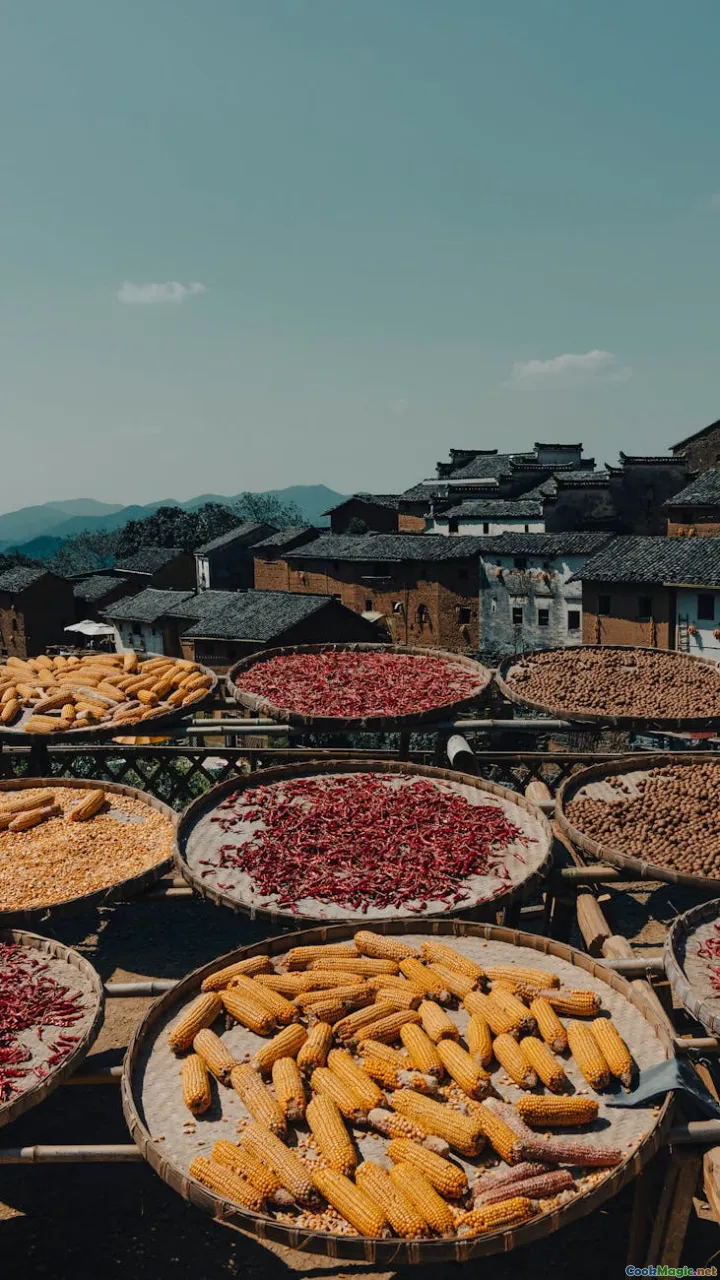A Journey Through Nepalese Cuisine
8 min read Embark on a flavorful journey exploring Nepalese cuisine, its rich cultural roots, vibrant flavors, and iconic dishes that tell stories of the mountains and valleys. April 27, 2025 19:55
A Journey Through Nepalese Cuisine
Nestled amidst the towering Himalayas, Nepal is a land of breathtaking landscapes, ancient traditions, and a rich culinary heritage that reflects its diverse geography and history. To taste Nepalese cuisine is to taste a story—a tapestry woven from centuries of cultural exchanges, spiritual beliefs, and local ingredients. It’s an invitation to explore a world where flavors are bold, textures are hearty, and every dish carries the warmth of Nepalese hospitality.
The Cultural Tapestry of Nepalese Food
Nepal’s culinary landscape is as varied as its terrain, from the lush Terai plains in the south to the rugged mountains of the Himalayas. Each region boasts its own specialties, influenced by neighboring countries like India, Tibet, and China, yet uniquely Nepalese in flavor and technique.
Food in Nepal is more than sustenance; it’s a reflection of social bonds, religious practices, and seasonal cycles. Festivals are often marked by feasts, and daily meals are imbued with rituals that honor gods and ancestors. This deep cultural connection is what makes Nepalese cuisine so soulful and compelling.
Iconic Dishes: A Culinary Exploration
Dal Bhat: The Heart of Nepalese Meals
Imagine a steaming bowl of rice paired with a variety of lentil soups—this is Dal Bhat, the staple of Nepalese cuisine. It’s more than just a meal; it’s a daily ritual that sustains millions. The lentils are cooked with turmeric, garlic, and ginger, releasing a fragrant aroma that fills the air. The rice, fluffy and warm, acts as the canvas for an array of accompaniments.
Accompanying Dal Bhat are side dishes called tarkari, which include seasonal vegetables cooked with spices, and achaar, tangy pickles made from local fruits and vegetables, adding a zing to every bite. This meal embodies balance—simple yet complex, humble yet hearty.
Momos: Nepal’s Beloved Dumplings
Originating from Tibet, momos have become a beloved street food across Nepal. These delicate dumplings are filled with minced meat or vegetables, seasoned with cumin, garlic, and ginger, then steamed or fried to perfection. The first bite reveals a tender, juicy interior contrasted with a slightly chewy wrapper.
Dipped in spicy chili sauce or tangy tomato achar, momos offer a burst of flavor and texture that’s irresistible. Visiting a bustling Kathmandu street market, the aroma of freshly steamed momos is enough to whet anyone’s appetite.
Sel Roti and Gundruk: Traditional Delights
Nepalese festivals often feature sel roti, a sweet, ring-shaped bread made from rice flour and flavored with cardamom. It’s deep-fried until golden, crispy on the outside and soft inside, often enjoyed with yogurt or tea.
Gundruk, fermented leafy greens, adds a tangy, umami punch to the meal. Often served as a side dish or in soups, gundruk embodies Nepal’s love for fermentation, preserving vegetables through long Himalayan winters.
Thukpa and Shabalay: Himalayan Comfort Food
In the mountain regions,thukpa—a hearty noodle soup with vegetables, meat, and a flavorful broth—warms both body and spirit. It’s a communal dish during cold evenings, offering a soothing escape from the chill.Shabalay, Nepalese-style samosas filled with spiced vegetables or meat, are popular snacks enjoyed with a cup of yak butter tea, a warming beverage that fuels high-altitude adventures.
Cooking Techniques and Ingredients
Nepalese cuisine is characterized by its use of fresh, local ingredients. Himalayan herbs like timur (Szechuan pepper), radhuni (a native spice), and jimbu (wild onion) lend distinctive flavors.
Cooking methods include steaming, boiling, and slow-cooking, which preserve the nutritional value and enhance flavor. Fermentation plays a vital role, especially in making gundruk and bhuja (fermented bamboo shoots).
Rice and lentils are the staples, complemented by vegetables like potatoes, spinach, and cauliflower, and meats such as yak, goat, and chicken. These ingredients are combined with an array of spices that create complex layers of flavor, from mild and aromatic to fiery and pungent.
The Experience of Dining in Nepal
Eating in Nepal is an immersive experience. In rural villages, meals are often shared around a low table, with everyone sitting cross-legged on woven mats. The aroma of spices, the clatter of utensils, and the warmth of communal sharing create a sense of belonging.
In city eateries, the hustle and bustle of street markets offer a vibrant backdrop to your culinary adventure. The sight of colorful momos being steamed, the sizzle of chhoila (spicy grilled meat), and the aroma of fresh roti make every moment a feast for the senses.
Personal Reflections and Cultural Insights
Having traveled through Nepal, I’ve come to appreciate that its cuisine is more than just food—it’s a narrative of resilience, community, and spirituality. Sharing a bowl of Dal Bhat or a plate of momos with locals reveals stories of centuries-old traditions and warmth that transcends language.
One memorable experience was participating in a local festival where women prepared gundruk and sel roti, their smiles reflecting pride in their heritage. These moments underscore the importance of food as a vessel of cultural identity.
Conclusion: An Invitation to Explore
Nepalese cuisine, with its bold flavors, hearty dishes, and cultural depth, invites us to look beyond the mountains and explore a culinary world that is both humble and extraordinary. Whether you’re savoring a steaming bowl of Dal Bhat, biting into a spicy momo, or sipping yak butter tea in a Himalayan village, you’re partaking in a tradition that has nourished and united a nation for generations.
So, next time you seek an adventure—culinary or otherwise—consider Nepal. Let its food be your guide into a land where every meal is a story, every flavor a memory, and every bite a journey.









